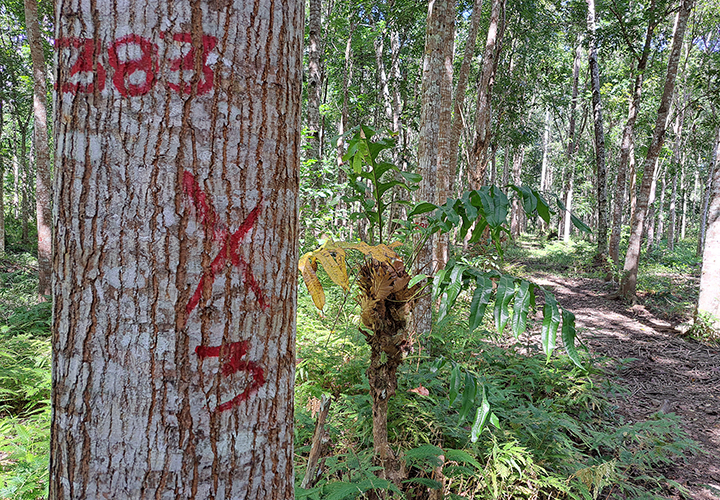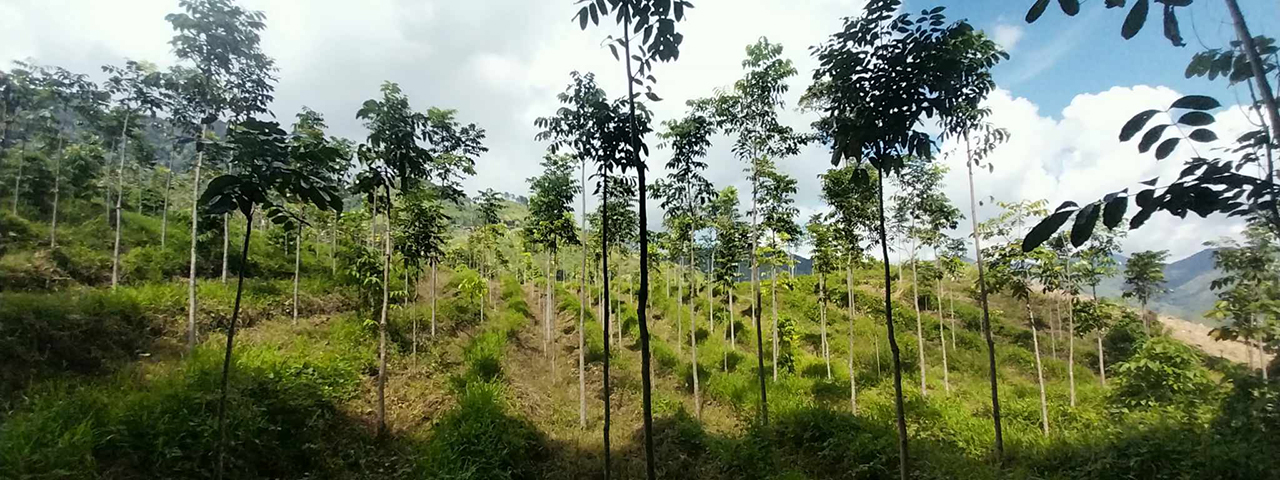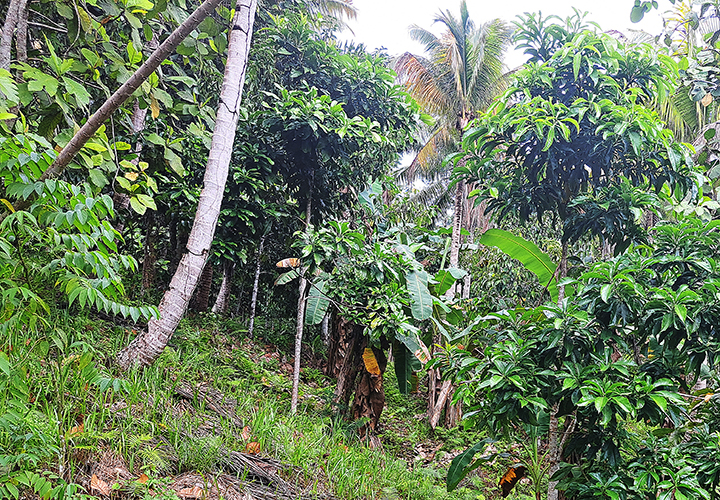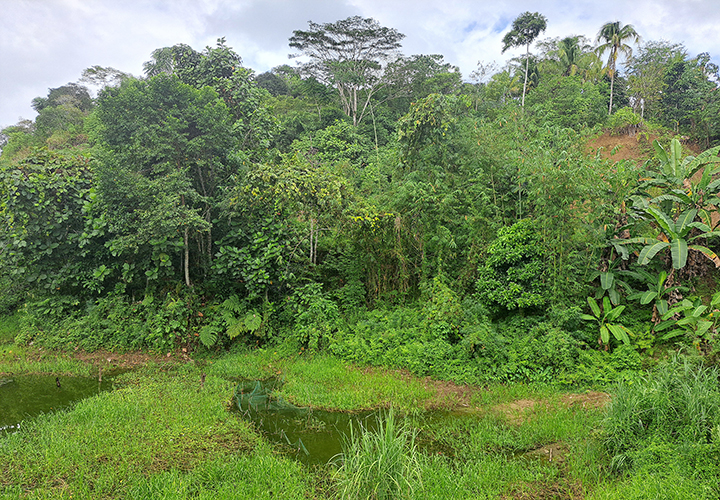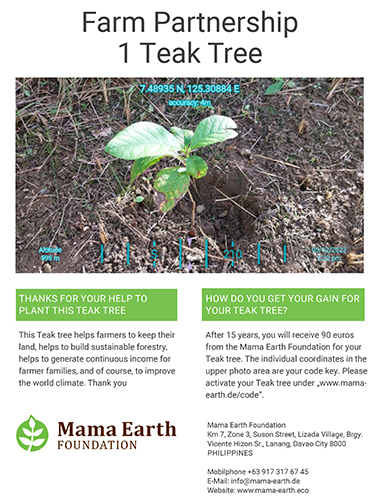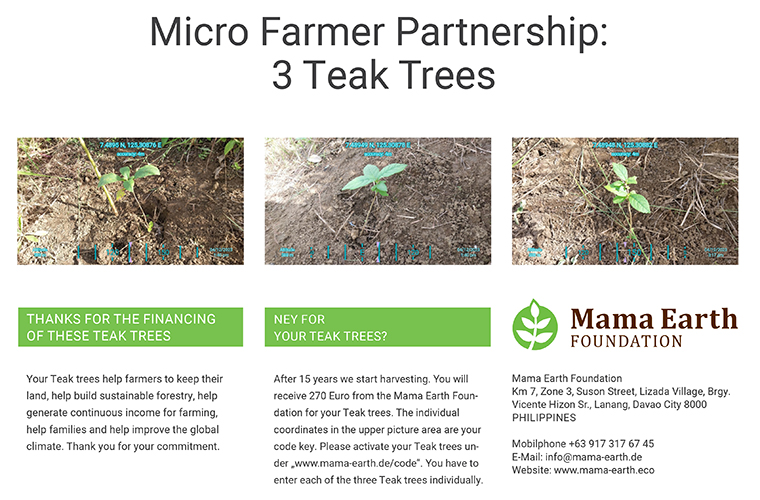The cross says: This tree has reached its 32 centimeter trunk circumference and will be cut down in May 2024.
Teak grows excellently in the mountains of Patag because the trees are sun worshippers.
The mahogany trees in Patag are growing in line with expectations, but still need a few years before they can be harvested.
Our task now is to develop different marketing concepts. The goal is clear: to generate as much income as possible from the trees. Fortunately, the economy in the Philippines is slowly picking up again and many construction projects are continuing. This is a good market for timber, especially for hardwood such as mahogany.
Interplanting concept: In Monkayo and Montevista, we have planted the mahogany trees on existing farms as intermediate plantings. The farms can continue to be managed as before, and in addition the farm owners can achieve a higher yield from the mahogany trees on their farms without having to invest their own money. After the harvest, we give the farmers new tree seedlings so that they can grow their own trees. But these fresh trees then belong to them 100 percent.
Open space concept: The mahogany trees in Patag are not yet ready because they are still too young. We have decided to make a change for the other plantations, as we have open areas in the mountains – in contrast to Monkayo and Montevista. The timber companies that operated there many years ago cleared everything without thinking about planting new trees. Tabula rasa, instead of sustainable forestry. Teak trees in particular thrive in open areas because they love the sun, unlike mahogany trees, which prefer to grow in the shade in the early years. In future, we will only plant teak in order to make optimum use of the location. It is important to know that teak trees need longer than mahogany trees before they are ready for harvest. As we have the land available in Patag for 25 years, this is not a problem. We even have the option of letting the teak trees grow longer to achieve thicker trunks. It is also very beneficial for the growth of the trees that we have set the planting distances at four by four meters. This means that each tree has sufficient nutrients at its disposal.
The forest of giants: The story continues here shortly. The provincial administration wanted to turn the small paradise into a tourist hotspot and overzealously built a concrete ring road around the lake. High-flying plans that did not come to fruition. Nature is working hard to overgrow the construction sins. Now it’s our turn again to continue reforesting on behalf of the provincial administration. We are planting your personal jungle giant for you. Read the short description on the next page and watch the videos.
109 Toog trees growing well. They grow up to 45 meters high.
A small forest, but the tree population makes it unique.
Teakbaum-Partnerschaften mit Farmern
Wenn Sie hierzu Fragen haben, schreiben Sie uns gerne eine E-Mail: info@mama-earth.de
Single Teak tree für 25 Euro: Finanzieren Sie einen Teakbaum, vom dem Sie ein Foto mit seinen Koordinaten als Eigentumsnachweis bekommen. Die Koordinaten Ihres Baumes sind im oberen Teil des Fotos abgebildet und gleichzeitig Ihre Codierung für die Auszahlung. Nach zirka 15 Jahren wird geerntet und Sie bekommen für Ihren Holzanteil zirka 90 Euro. Mit diesem Einzelinvestment helfen Sie den Farmern ihr Land zu behalten und eine nachhaltige Forstwirtschaft aufzubauen. Eine ökologisch-soziale Investition – und ein solides Geschenk für Freunde.
Tripple Teak Trees für 75 Euro: Finanzieren Sie drei Teakbäume, vom denen Sie jeweils ein Foto mit den Koordinaten als Eigentumsnachweis bekommen. Die Koordinaten der Bäume sind im oberen Teil der Fotos abgebildet und gleichzeitig Ihre Codierung für die Auszahlung. Nach zirka 15 Jahren wird geerntet und Sie bekommen für Ihren Holzanteil zirka 270 Euro.


